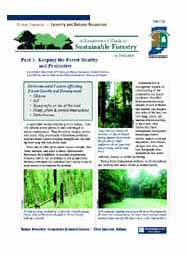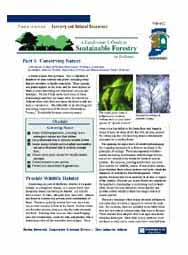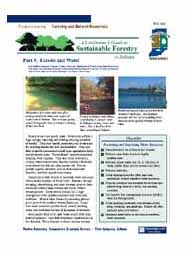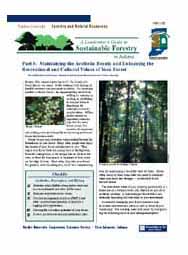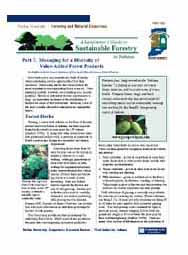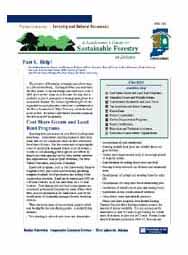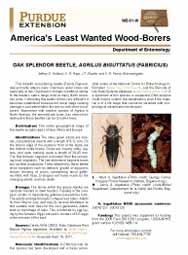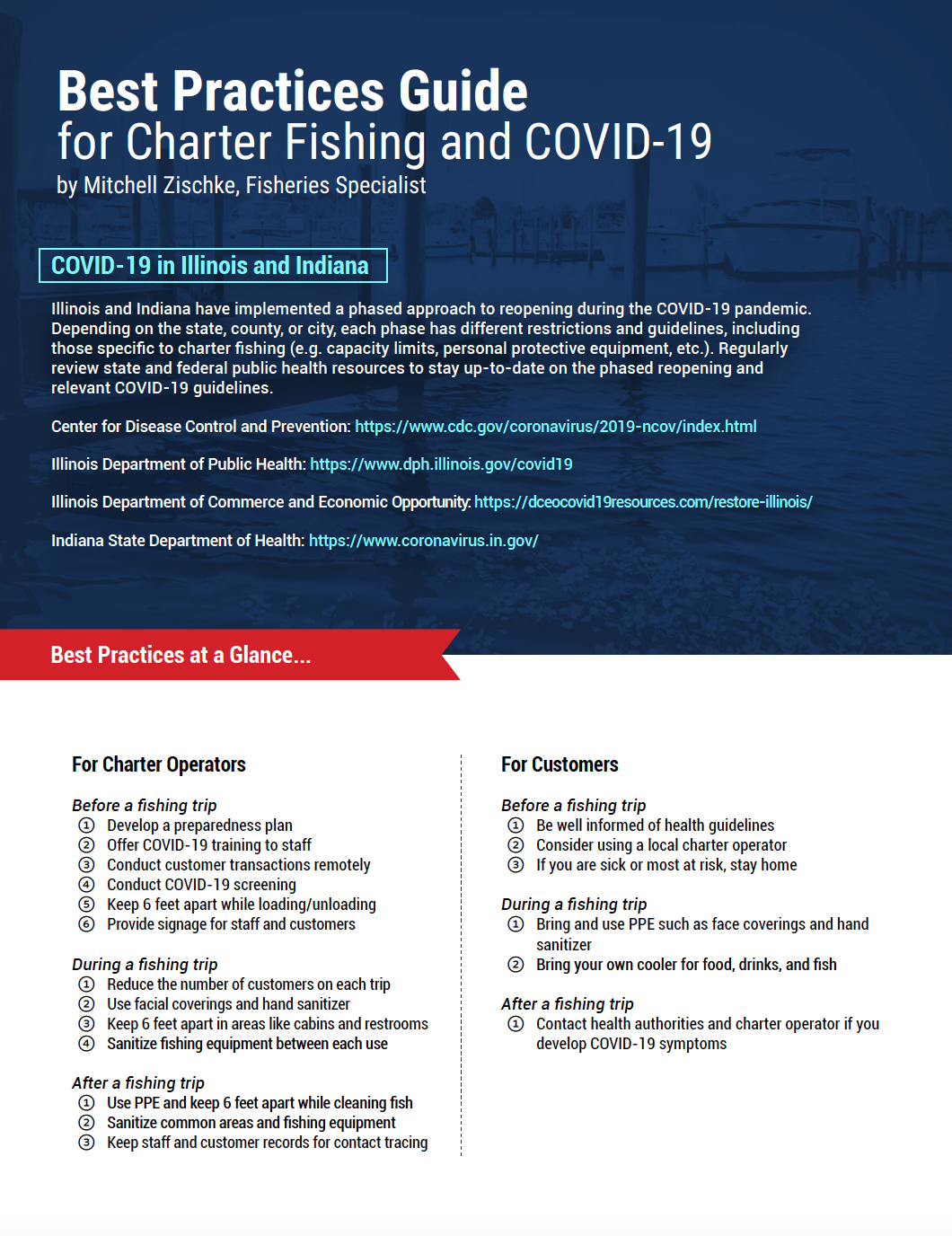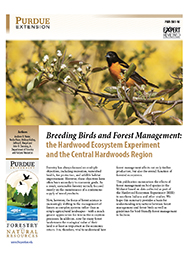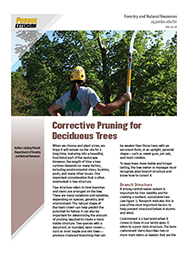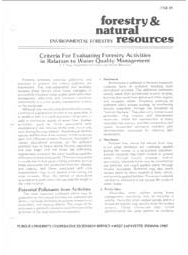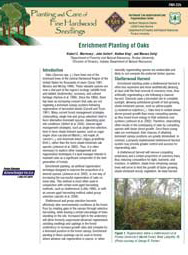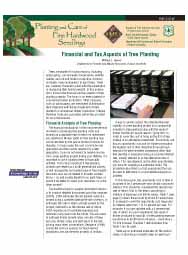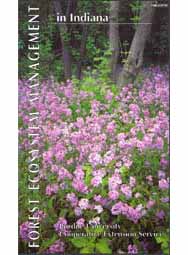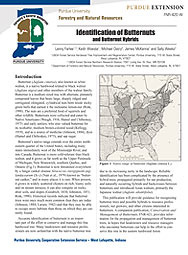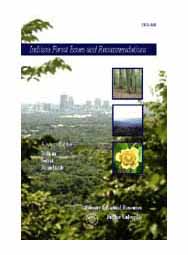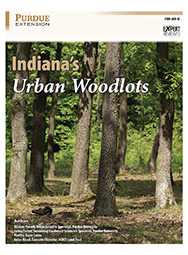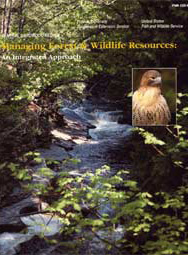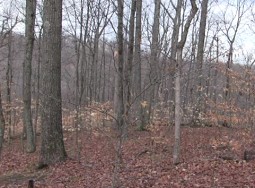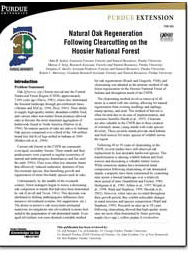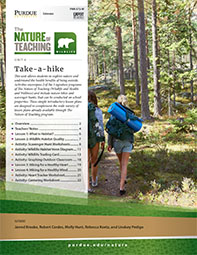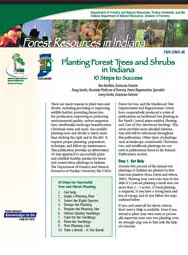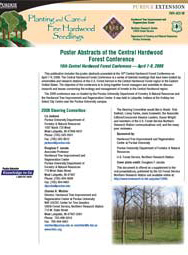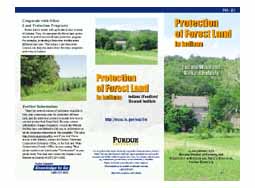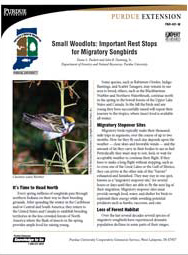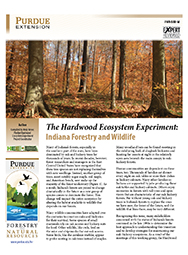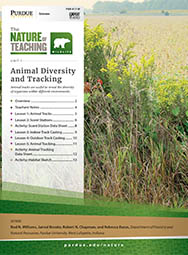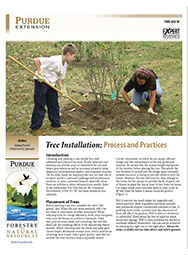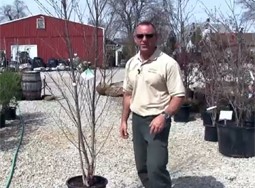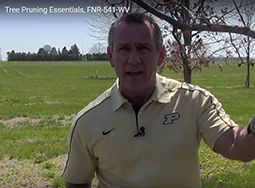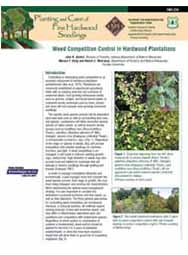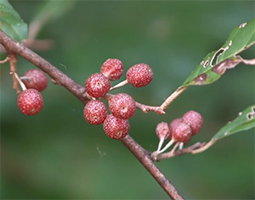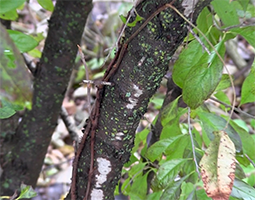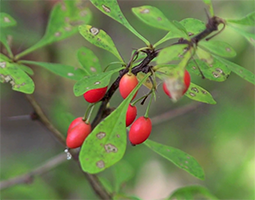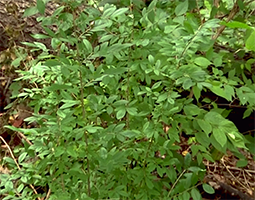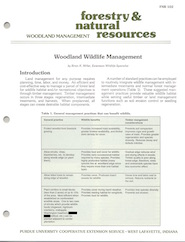Natural Resources
Forest Management
A Landowner's Guide to Sustainable Forestry: Part 2: Planning for the Future
Developing a forest management plan is a necessary first step in sustainable forest management. This publication outlines the basics of a forest management plan which includes where to find help, setting objectives and p...
A Landowner's Guide to Sustainable Forestry: Part 3: Keeping Your Forest Healthy and Productive
This publication explains how to maintain your forest by improving tree growth, tree health, timber quality and forest regeneration. ...
A Landowner's Guide to Sustainable Forestry: Part 4: Conserving Nature
A forest is more than just trees. It's a collection of hundreds or thousands of living things interacting with each other. This publication provides information on managing wildlife habitats, endangered species, the rol...
A Landowner's Guide to Sustainable Forestry: Part 5: Forests and Water
Forests protect and purify water. Forest soils act like a huge sponge, capturing and filtering amazing quantities of rainfall. They slow runoff, preventing soil erosion and the resulting stream and lake sedimentation. Th...
A well-managed forest that is aesthetically appealing will add value to your investment. This publication offers advice for maintaining visual buffers and scenic views and how to develop the recreation potential in your ...
Most landowners may immediately think of timber when considering income opportunities from their woodland. However, there are many more possibilities. This publication highlights a few of the more popular alternative ent...
A Landowner's Guide to Sustainable Forestry: Part 8: Help!
Managing a forest may be overwhelming. This publication provides help that is available to you to help manage your forest in a sustainable manner. The publication offers contact information for organizations and programs...
America's Least Wanted Wood-Borers: Oak Splendor Beetle, Agrilus biguttatus (fabricus)
Oak splendor beetle is a wood borer that primarily attacks oaks - stressed trees are especially at risk. This publication provides distribution, identification, and biological information about this insect.
Fo...
Best Practices Guide for Charter Fishing and COVID-19
This guide provides best practices for charter operators, captains, crew and customers to minimize the risk of COVID-19 for charter fishing in southern Lake Michigan. The guide covers measures that operators and customer...
The focus of forest science is increasingly shifting to the management of forests as complex systems rather than as simple agricultural landscapes—with a much greater appreciation for the interactive ecosystem proc...
Specialists from Purdue Extension-Forestry and Natural Resources describe the invasive species Burning Bush and what we can do to stop the spread of this species in our forest.
Specialists include: Lenny Farle...
Conservation and Management of Butternut Trees
This 10-page PDF publication describes how butternuts, native hardwood trees related to black walnuts, are threatened by butternut canker disease and have been listed as a species of special concern by the federal govern...
Corrective Pruning for Deciduous Trees
How do I remedy poor branching? Is my tree at risk of splitting, and how can pruning prevent that? Corrective pruning has many implications for tree structure, health, and longevity. Developing a strong, central branc...
Criteria for Evaluating Forestry Activities in Relation to Water Quality Management
This publication discusses interrelated forestry activities, potential pollutants, and practices to prevent and reduce pollution. ...
Many factors contribute to the success or failure of an enrichment planting operation. This publication outlines the seedling survival rates using the basic methods described in the publication....
Financial and Tax Aspects of Tree Planting
This publication helps hardwood producers understand the tax and financial advantages (and disadvantages) related to their planting operations....
Forest Ecosystem Management in the Central Hardwood Region
This publication is specific to the Central Hardwood Region and discusses ecosystem management and how it places a stronger emphasis on larger spatial scales than past management approaches. The primary objectives of ...
Healthy forests provide many benefits for private landowners and for society at large. This publication describes how a forest owner can manage and improve his timber resources for harvest. Through forest improvement lan...
Forest Pest Control Perspective
This publication discusses pest control in forests and management of forest pests. Pesticides, herbicides, insecticides, rodenticides and fungicides are discussed. ...
Forestry and Water Quality: Pollution Control Practices
This publication discusses control of water pollution resulting from forestry activities, which involves a combination of prevention and reduction measures. These measures are built into the interrelated activities of ...
Hardwood Ecosystem Experiment - Sustaining Our Oak-Hickory Forests
Our oak-hickory forests provide us with many environmental, social and economic benefits. Without proper stewardship, these benefits can be reduced through the loss of these forests. This video discusses the role mana...
Hardwood Ecosystem Experiment - Wildlife Responses to Timber Harvesting
Our oak-hickory forests provide us with many environmental, social and economic benefits. Without proper stewardship, these benefits can be reduced through the loss of these forests. This video discusses how wildlife ...
How to Build a Plastic Mesh Deer Exclusion Fence
Browsing by deer on planted and naturally regenerated hardwood seedlings is one of the greatest obstacles to seedling establishment in many parts of the central hardwood region. Research on tree plantings in Indiana sho...
Identification of Butternuts and Butternut Hybrids
This 11-page PDF publication describes how butternuts, native hardwood trees related to black walnuts, are often hard for landowners to identify, because they are rare and people often are not familiar with them. In addi...
Woodlots are dynamic, vital ecosystems in the urban and suburban landscapes of the Midwest. People own these small wooded lots in urbanized areas for a variety of reasons: timber production, firewood production, recreati...
Invasive Plant Series: Winged Burning Bush
Winged burning bush has been designated as an invasive species in the U.S. Learn more about the identification, distribution, impact, management and control of this deciduous shrub found in Indiana hardwood forests.
...
Scientists and natural resource managers depend on sound scientific research-based information on which to make future management decisions that will "manage our forest for sustainable wildlife and manage our wildlife...
Purdue University Professor Barny Dunning teaches how forests are used by birds year round, important habitat features of woodlands that can benefit birds, and how woodland owners can enhance their property for birds. Ma...
Natural Oak Regeneration Following Clearcutting on the Hoosier National Forest
Predicting mature stand conditions based on the current status of a stand and natural progression is often difficult and imprecise. However, intermediate silvicultural operations allow a land manager to control and shape...
Nature of Teaching Unit 6: Take-a-Hike
This unit provides introductory lesson plans that allow students to explore nature and understand the health benefits of being outside. Activities encompass 2 of the 3 signature programs of The Nature of Teaching (Wil...
Planting Forest Trees and Shrubs in Indiana
This 20-page publication provides an abbreviated 10-step approach to successfully plant and establish healthy, productive forest and conservation plantings in Indiana. It discusses types of plantings, site selection, sit...
Planting Forest Trees and Shrubs in Indiana (50/pkg)
This 20-page publication provides an abbreviated 10-step approach to successfully plant and establish healthy, productive forest and conservation plantings in Indiana. It discusses types of plantings, site selection, sit...
Preparing Indiana's Urban Forest for Climate Change
Choosing species of trees that will thrive in urban settings has always required careful consideration, but climate change is making that task even more important. In this paper, Purdue and other researchers provide tool...
The Hardwood Ecosystem Experiment: 2006-2016
Many of Indiana's forests have been dominated by oak and hickory trees for thousands of years. The historical conditions that shaped today's forests have changed, altering forest composition and leading land managers ...
The Hardwood Ecosystem Experiment: Indiana Forestry and Wildlife
Many of Indiana's forests, especially in the southern part of the state, have been dominated by oak and hickory trees for thousands of years. In recent decades forest researchers and managers in the east-central United S...
The Nature of Teaching Unit 1: Animal Diversity and Tracking
This Unit includes five lesson plans: Animal Tracks, Scent Stations, Indoor Track Casting, Outdoor Track Casting and Animal Tracking. On the Nature of Teaching website teachers can find free lesson plans, printables, pos...
Thousand Cankers Disease: Indiana Walnut Trees Threatened
Thousand cankers disease (TCD) has killed many black walnut trees in the West, and the beetle that transmits the fungus has been detected in Indiana. This publication describes TCD and Indiana's walnut product quarant...
Tree Installation: Process and Practices
Choosing and planting a tree should be a well-informed and planned decision. Proper selection and planting of urban trees can provide years of enjoyment for you and future generations as well as increased property val...
Tree Planting Part 1: Choosing a Tree
Choosing and planting a tree should be a well-informed and planned decision. Proper selection and planting of urban trees can provide years of enjoyment for you and future generations as well as increased property value,...
Tree Planting Part 2: Planting Your Tree
Trees and all forestlands are major assets to our cities, towns, and communities. Urban trees, in particular, provide aesthetic, functional, and environmental benefits to improve the quality of life. A well-planted an...
Pruning has been called "one of the best, worst maintenance practices" performed on trees. The process creates wounds, which have a major impact on plant processes. Improper cutting on a tree causes severe damage or even...
Pruning has been called "one of the best, worst maintenance practices," especially when performed on urban trees. The process creates wounds, which have a major impact on plant processes. Improper cutting on a tree cause...
Weed Competition Control in Hardwood Plantations
A publication for landowners with wooded areas. Covers weed control strategies and related issues....
Woodland Stewardship for Landowners: Autumn Olive
Autumn-olive is an invasive plant that is originally from Asia, but has been introduced into the United States for erosion control, and wildlife food and cover.
** The "Free Download...
Woodland Stewardship for Landowners: Common Buckthorn
Native to Eurasia, common buckthorn was introduced into the United States as an ornamental plant, but has since invaded our woodlands as an invasive plant. Common buckthorn is becoming more common in Indiana.
Woodland Stewardship for Landowners: Japanese Barberry
Japanese barberry is an invasive plant that is originally from Japan, but has been introduced into the United States as an ornamental plant.
** The "Free Download" button takes you t...
Woodland Stewardship for Landowners: Privet
A variety of privets have been introduced into the United States from China, Europe and North Africa. Privet has been used as an ornamental plant, particularly as a hedgerow plant, but has since became an invasive specie...
This publication discusses the three stages of timber management: regeneration, intermediate treatments, and harvests, which, when preplanned, can create desirable habitat components. ...











